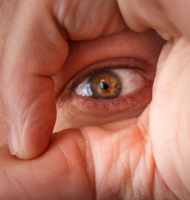I'm LIVID. I have a characters of a 2-3 year long campaigns with custom
drop-down macros with queries for their ENTIRE spellbook... and now it's
completely useless. I literally spent years tweaking, adding,
adjusting, improving, and adding onto tthis set of macros to make the perfect
'Grimoire' ... and now it's broken. I wrote <a href="https://wiki.roll20.net/Macros/Pathfinder_Examples" rel="nofollow">https://wiki.roll20.net/Macros/Pathfinder_Examples</a>
years ago, and it's held up right until this moment. I'm beyond
livid. This is seriously the kind of poor development practices that
are going to make people leave the platform, because it's definitely not
the first time. It's absolutely preposterous that a subscription business would roll out such a significant change in a seeming vaccum. Only a handful of people are on your Dev servers; the vast majority of your userbase isn't going to see notices there. Even if everyone were to see a notice, how is it ever OK to invalidate a method of coding that's been in use for years? HTML replacements have been needed and used literally for years... and the devs decided it was a good idea to just not use them anymore?!?! One of the biggest obstacles to switching to a different platform like Foundry or Fantasy Grounds is having to port over automations into a new system. If we have to re-write everything as 'the fix' to this problem, we might as well just bite the bullet and migrate anyway. This is just ONE of the simpler macros in question. &{template:pf_spell} {{color=@{rolltemplate_color}}} {{name=?{Level 3 Spells | Aqueous Orb, Aqueous Orb &#125;&#125; {{name_link=<a href="http://www.d20pfsrd.com/magic/all-spells/a/aqueous-orb&#125;&#125" rel="nofollow">http://www.d20pfsrd.com/magic/all-spells/a/aqueous-orb&#125;&#125</a>; {{subtitle=*10' Sphere*&#125;&#125; {{medium=range_pick&#125;&#125; {{range=[[@{spellclass-0-medium}]]&#125;&#125;{{saving_throw=Reflex(neg)&#125;&#125; {{dc=*[[10[BASE] + ?{Heightened Spell Level &#124; 3 &#125;[SL] + [[ @{INT-MOD} ]][INT] + @{SF-CONJ}[SF] ]]*&#125;&#125; {{1st Save=[[2d6]] Non-Lethal&#125;&#125 {{description=(*If 1st save failed*) Make a ** 2nd Save** vs.Engulf. Up to [[4]] medium creatures Engulfed. Take ``[[2d6]]`` Non-Lethal at **start of their turn.** Have ***[Cover](<a href="http://www.d20pfsrd.com/gamemastering/combat#TOC-Cover)***" rel="nofollow">http://www.d20pfsrd.com/gamemastering/combat#TOC-Cover)***</a> and ***[Entangled](<a href="http://www.d20pfsrd.com/gamemastering/conditions#TOC-Entangled)***" rel="nofollow">http://www.d20pfsrd.com/gamemastering/conditions#TOC-Entangled)***</a>. New Reflex to escape to random square ([[1d8]]) Move 30' as Move Action | Battering Blast, Battering Blast &#125;&#125; {{name_link=<a href="http://www.d20pfsrd.com/magic/all-spells/b/battering-blast/" rel="nofollow">http://www.d20pfsrd.com/magic/all-spells/b/battering-blast/</a> &#125;&#125; {{subtitle=[[floor(@{spellclass-0-level-total}/5)]]x Spiked Force Balls&#125;&#125; {{close=range_pick&#125;&#125; {{range=[[@{spellclass-0-close}]]&#125;&#125; {{saving_throw=Ref(Partial)&#125;&#125; {{Failed Save=``PRONE``&#125;&#125; {{dc=[[10[BASE] + ?{Heightened Spell Level &#124; 3 &#125;[SL] + [[ @{INT-MOD} ]][INT] + @{SF-EVOC}[SF] ]] &#125;&#125; {{sr=[[1d20+@{spellclass-0-level-total} + @{spellclass-0-SP-mod}]] &#125;&#125; {{description= Force Damage vs Touch AC • ***[[1d20 + @{attk-ranged}]] ► [[5d6]] dmg + BullRush: [[1d20+@{int-mod}+@{spellclass-0-level-total}]]*** • ***[[1d20 + @{attk-ranged}]] ► [[5d6]] dmg + BullRush: [[1d20+@{int-mod}+@{spellclass-0-level-total}]]*** • ***[[1d20 + @{attk-ranged}]] ► [[5d6]] dmg + BullRush: [[1d20+@{int-mod}+@{spellclass-0-level-total}]]*** (*+10 CMB for each additional Blast on a single target beyond the first*) If [BULLRUSHED](<a href="http://www.d20pfsrd.com/gamemastering/combat/#TOC-Bull-Rush" rel="nofollow">http://www.d20pfsrd.com/gamemastering/combat/#TOC-Bull-Rush</a>) Target Saves vs Reflex or falls PRONE | Battering Blast(Intensified), Battering Blast(Intensified) &#125;&#125; {{name_link=<a href="http://www.d20pfsrd.com/magic/all-spells/b/battering-blast/" rel="nofollow">http://www.d20pfsrd.com/magic/all-spells/b/battering-blast/</a> &#125;&#125; {{subtitle=[[floor(@{spellclass-0-level-total}/5)]]Spiked Force Balls&#125;&#125; {{close=range_pick&#125;&#125; {{range=[[@{spellclass-0-close}]]&#125;&#125; {{saving_throw=Ref(Partial)&#125;&#125; {{Failed Save=``PRONE``&#125;&#125; {{dc=[[10[BASE] + ?{Heightened Spell Level &#124; 3 &#125;[SL] + [[ @{INT-MOD} ]][INT] + @{SF-EVOC}[SF] ]] &#125;&#125; {{sr=[[1d20+@{spellclass-0-level-total} + @{spellclass-0-SP-mod}]] &#125;&#125; {{description=Force Damage vs Touch AC • ***[[1d20 + @{attk-ranged}]] ► [[ [[floor(@{spellclass-0-level-total}/2) ]]d6]] dmg + BullRush: [[1d20+@{int-mod}+@{spellclass-0-level-total}]]*** • ***[[1d20 + @{attk-ranged}]] ► [[ [[floor(@{spellclass-0-level-total}/2) ]]d6]] dmg + BullRush: [[1d20+@{int-mod}+@{spellclass-0-level-total}]]*** • ***[[1d20 + @{attk-ranged}]] ► [[ [[floor(@{spellclass-0-level-total}/2) ]]d6]] dmg + BullRush: [[1d20+@{int-mod}+@{spellclass-0-level-total}]]*** (*+10 CMB for each additional Blast on a single target beyond the first*) If [BULLRUSHED](<a href="http://www.d20pfsrd.com/gamemastering/combat/#TOC-Bull-Rush" rel="nofollow">http://www.d20pfsrd.com/gamemastering/combat/#TOC-Bull-Rush</a>) Target Saves vs Reflex or falls PRONE | DayLight, DayLight &#125;&#125; {{name_link=<a href="http://www.d20pfsrd.com/magic/all-spells/d/daylight/&#125;&#125" rel="nofollow">http://www.d20pfsrd.com/magic/all-spells/d/daylight/&#125;&#125</a>; {{subtitle=Target Object Touched&#125;&#125; {{duration=[[@{spellclass-0-level-total}*10]] Minutes(D) &#125;&#125;{{description=• 60' Bright Light • Not Actual Daylight • Negates Magical Darkness • Counters Spells of Equal Level | Dispel Magic, Dispel Magic&#125;&#125; {{name_link=<a href="http://www.d20pfsrd.com/magic/all-spells/d/dispel-magic&#125;&#125" rel="nofollow">http://www.d20pfsrd.com/magic/all-spells/d/dispel-magic&#125;&#125</a>; {{medium=range_pick&#125;&#125; {{range=[[@{spellclass-0-medium}]] &#125;&#125; {{subtitle=*Spell&#44; Target&#44; or Item*&#125;&#125; {{description= ***Rolls Adjusted for 11+CL. Just compare CL not CL+11*** &#125;&#125;{{ Targeted [[1d20 + @{spellclass-0-level-total} -11]]=**vs Spell's CL**&#125;&#125; {{ Success=**Spell Ends**&#125;&#125; {{ Failure=**Target Next Spell**&#125;&#125; {{ Suppress [[1d20 + [[@{spellclass-0-level-total}]] -11 ]]=**vs Item's CL** &#125;&#125; {{ Suppress Duration=[[1d4]] *rds* &#125;&#125; {{COUNTER [[1d20+@{spellclass-0-level-total}+4]]=**vs Spell's CL** | Explosive Runes, Explosive Runes &#125;&#125; {{name_link=<a href="http://www.d20pfsrd.com/magic/all-spells/e/explosive-runes" rel="nofollow">http://www.d20pfsrd.com/magic/all-spells/e/explosive-runes</a> &#125;&#125; {{subtitle=1 Obj. less than 10 lbs.&#125;&#125; {{sr=[[1d20 + [[@{spellclass-0-level-total}]]]] &#125;&#125; {{DC=[[10 + ?{Heightened Spell Level &#124; 3 &#125;[SL] + @{SF-EVOC}[SF] + @{Int-mod}[INT] ]] Ref (See Text)&#125;&#125; {{description= • 5ft of item: [[6d6]] No Save • 10ft of item: [[6d6]] Ref for Half • Toppling: [[1d20 + @{spellclass-0-level-total} + @{Int-Mod}]] vs CMD | Fireball, Fireball&#125;&#125; {{name_link=<a href="http://www.d20pfsrd.com/magic/all-spells/f/fireball&#125;&#125" rel="nofollow">http://www.d20pfsrd.com/magic/all-spells/f/fireball&#125;&#125</a>; {{subtitle=[[20]] ft Radius&#125;&#125; {{long=range_pick&#125;&#125; {{range=[[@{spellclass-0-long}]] &#125;&#125; {{DC=[[10 + ?{Heightened Spell Level &#124; 3 &#125;[SL] + @{SF-EVOC}[SF] + @{Int-mod}[INT] ]] *Reflex (Half)*&#125;&#125; {{sr=[[1d20 + [[@{spellclass-0-level-total} + @{spellclass-0-SP-mod}]]] ]] &#125;&#125;{{description=[[10d6]] **Fire Dmg** • *Sets fire to combustibles* • *Damages unattended obj.* | Fireball(Intensified), Fireball(Intensified)&#125;&#125; {{name_link=<a href="http://www.d20pfsrd.com/magic/all-spells/f/fireball&#125;&#125" rel="nofollow">http://www.d20pfsrd.com/magic/all-spells/f/fireball&#125;&#125</a>; {{subtitle=[[20]] ft Radius&#125;&#125; {{long=range_pick&#125;&#125; {{range=[[@{spellclass-0-long}]] &#125;&#125; {{DC=[[10 + ?{Heightened Spell Level &#124; 3 &#125;[SL] + @{SF-EVOC}[SF] + @{Int-mod}[INT] ]] *Reflex (Half)*&#125;&#125; {{sr=[[1d20 + [[@{spellclass-0-level-total} + @{spellclass-0-SP-mod}]]] ]] &#125;&#125;{{description=[[15d6]] **Fire Dmg** • *Sets fire to combustibles* • *Damages unattended obj.* | Fly , Fly &#125;&#125; {{name_link=<a href="http://www.d20pfsrd.com/magic/all-spells/f/fly/" rel="nofollow">http://www.d20pfsrd.com/magic/all-spells/f/fly/</a> &#125;&#125; {{subtitle=Creature Touched&#125;&#125; {{duration=[[@{spellclass-0-level-total}]] Minutes &#125;&#125;{{description=• 60' Fly Speed • Can Charge but not Run • Fly Skill + [[floor(@{spellclass-0-level-total}/2)]] Upon expiring target floats down 60 feet per round for [[1d6]] rounds | Haste , Haste &#125;&#125; {{name_link=<a href="http://www.d20pfsrd.com/magic/all-spells/h/haste/" rel="nofollow">http://www.d20pfsrd.com/magic/all-spells/h/haste/</a> &#125;&#125; {{subtitle=*@{spellclass-0-level-total}x within 30' of each&#125;&#125; {{close=range_pick&#125;&#125; {{range=[[@{spellclass-0-close}]]&#125;&#125; {{duration=[[@{spellclass-0-level-total}]] Rounds&#125;&#125;{{description=• Extra Attack During FullRound • +1 Attack Rolls • +1 Dodge Bonus AC • +1 Reflex Saves • Movement +30' | Haste(Mythic) , Haste &#125;&#125; {{name_link=<a href="http://www.d20pfsrd.com/magic/all-spells/h/haste/" rel="nofollow">http://www.d20pfsrd.com/magic/all-spells/h/haste/</a> &#125;&#125; {{subtitle=*@{spellclass-0-level-total}x within 30' of each&#125;&#125; {{close=range_pick&#125;&#125; {{range=[[@{spellclass-0-close}]]&#125;&#125; {{duration=[[@{spellclass-0-level-total}]] Rounds&#125;&#125;{{description=• Extra Attack During FullRound • +1 Attack Rolls • +1 Dodge Bonus AC • +1 Reflex Saves • Movement +50' • Extra Move Action each round **IF** Augmented (2x mp) • Movement +70' • Move over liquid as if solid • If liquid deals damage take half | Heroism, Heroism &#125;&#125; {{name_link=<a href="http://www.d20pfsrd.com/magic/all-spells/h/heroism/" rel="nofollow">http://www.d20pfsrd.com/magic/all-spells/h/heroism/</a> &#125;&#125; {{subtitle=Creature Touched&#125;&#125; {{duration=[[@{spellclass-0-level-total}*10]] Minutes&#125;&#125;{{description=+[[2]] Morale Bonus: Attack • Saves • Skill Checks | Heroism(M), Heroism(M) &#125;&#125; {{name_link=<a href="http://www.d20pfsrd.com/magic/all-spells/h/heroism/" rel="nofollow">http://www.d20pfsrd.com/magic/all-spells/h/heroism/</a> &#125;&#125; {{subtitle=Creature Touched&#125;&#125; {{duration=[[@{spellclass-0-level-total}*10]] Minutes&#125;&#125;{{description=+[[4]] Morale Bonus: Attack • Damage • Saves • All Checks **Augmented(3rd)** Expend 2 Mythic Power the target gains an additional attack as per Haste (TIER) number of times | Ice Spears, Ice Spears&#125;&#125; {{name_link=<a href="http://www.d20pfsrd.com/magic/all-spells/i/ice-spears&#125;&#125" rel="nofollow">http://www.d20pfsrd.com/magic/all-spells/i/ice-spears&#125;&#125</a>; {{subtitle=[[floor(@{spellclass-0-level-total}/4)]] 5foot x 10foot Ice Spears&#125;&#125; {{close=range_pick&#125;&#125; {{range=[[@{spellclass-0-close}]] &#125;&#125; {{DC=[[10 + ?{Heightened Spell Level &#124; 3 &#125;[SL] + @{Int-mod}[INT] + @{SF-CONJ}[SF]]] *Reflex (Half)*&#125;&#125; {{description= **Spear1:** [[2d6]] *Cold** Dmg* + Trip [[d20 + @{spellclass-0-level-total}[Level] + @{int-mod}[Int]]] **Spear1:** [[2d6]] *Piercing** Dmg* **Spear2:** [[2d6]] *Cold** Dmg* + Trip [[d20 + @{spellclass-0-level-total}[Level] + @{int-mod}[Int] ]] **Spear2:** [[2d6]] *Piercing** Dmg* **Spear3:** [[2d6]] *Cold** Dmg* + Trip [[d20 + @{spellclass-0-level-total}[Level] + @{int-mod}[Int] ]] **Spear3:** [[2d6]] *Piercing** Dmg* (**+10** Trip Bonus for each additional spear hitting same target) | Invisibility Sphere, Invisibility Sphere &#125;&#125; {{name_link=<a href="http://www.d20pfsrd.com/magic/all-spells/i/invisibility-sphere/" rel="nofollow">http://www.d20pfsrd.com/magic/all-spells/i/invisibility-sphere/</a> &#125;&#125; {{subtitle=10' Radius around Caster&#125;&#125; {{duration=[[@{spellclass-0-level-total}]] Minutes &#125;&#125;{{description=**INVISIBILITY** • Creatures See Each Other • Leaving Area or Attacking removes effect for the creature only | Pellet Blast, Pellet Blast &#125;&#125; {{name_link=<a href="https://www.d20pfsrd.com/magic/all-spells/p/pellet-blast/" rel="nofollow">https://www.d20pfsrd.com/magic/all-spells/p/pellet-blast/</a> &#125;&#125; {{subtitle=*30' Cone*&#125;&#125; {{saving_throw=Reflex(Half) &#125;&#125; {{dc=[[10[BASE] + ?{Heightened Spell Level &#124; 3 &#125;[SL] + [[ @{INT-MOD} ]][INT] + @{SF-CONJ}[SF] ]] &#125;&#125; {{description= Damage: [[ [[ {5 &#44; floor(@{spellclass-0-level}*.5) &#125;kl1 ]]d8 ]] Piercing Damage **This damage is subject to damage reduction.** **Optional Material Components:** Silver(20gp) Cold Iron(50gp) Adamantine(100gp) | Resist Energy(Communal) , Resist Energy(Communal) &#125;&#125; {{name_link=<a href="http://www.d20pfsrd.com/magic/all-spells/r/resist-energy/" rel="nofollow">http://www.d20pfsrd.com/magic/all-spells/r/resist-energy/</a> &#125;&#125; {{subtitle=Creatures Touched&#125;&#125; {{duration=[[@{spellclass-0-level-total}*10]] Min (Total)&#125;&#125; {{description=Resist Energy Damage **Level 1-6:** 10 Resistance **Level 7-10:** 20 Resistance **Level 11-20:** 30 Resistance **Duration Breakdown:** • 2 Targets: [[[[ round(@{spellclass-0-level-total}/2)*10 ]]*100/100]] Minutes Per Target • 3 Targets: [[[[ round(@{spellclass-0-level-total}/3)*10 ]]*100/100]] Minutes Per Target • 4 Targets: [[[[ round(@{spellclass-0-level-total}/4)*10 ]]*100/100]] Minutes Per Target • 5 Targets: [[[[ round(@{spellclass-0-level-total}/5)*10 ]]*100/100]] Minutes Per Target • 6 Targets: [[[[ round(@{spellclass-0-level-total}/6)*10 ]]*100/100]] Minutes Per Target | Slow, Slow &#125;&#125; {{name_link=<a href="https://www.d20pfsrd.com/magic/all-spells/s/slow/" rel="nofollow">https://www.d20pfsrd.com/magic/all-spells/s/slow/</a> &#125;&#125; {{subtitle=*[[@{spellclass-0-level-total}]] Creatures 30' apart*&#125;&#125; {{close=range_pick &#125;&#125; {{range=[[@{spellclass-0-close}]] &#125;&#125; {{duration=[[@{spellclass-0-level-total}]] Rounds &#125;&#125; {{saving_throw=Will(Neg) &#125;&#125; {{dc=[[10[BASE] + ?{Heightened Spell Level &#124; 3 &#125;[SL] + [[ @{INT-MOD} ]][INT] + @{SF-TRANS}[SF] ]] &#125;&#125; {{sr=[[1d20+@{spellclass-0-level-total}[CL] + @{spellclass-0-SP-mod}[SP MOD]]] &#125;&#125; {{description=• **``Staggered``** • **-1** Attack Rolls • **-1** AC • **-1** Reflex Saves Creature moves half speed | Spiked Pit, Spiked Pit &#125;&#125; {{name_link=<a href="http://www.d20pfsrd.com/magic/all-spells/s/spiked-pit" rel="nofollow">http://www.d20pfsrd.com/magic/all-spells/s/spiked-pit</a> &#125;&#125; {{subtitle=[[{floor((10*@{spellclass-0-level-total})/2)&#44;50&#125;kl1 ]] deep 10foot x 10foot Pit &#125;&#125; {{duration=[[@{spellclass-0-level-total}+1]] rounds &#125;&#125; {{medium=range_pick&#125;&#125; {{range=[[@{spellclass-0-medium}]] &#125;&#125; {{DC=[[10 + ?{Heightened Spell Level &#124; 3 &#125;[SL] + @{Int-mod}[INT] + @{SF-CONJ}[SF]]] *Reflex (Negate)*&#125;&#125; {{description=**Fall Damage:**[[[[{floor((@{spellclass-0-level-total})/2)&#44;5&#125;kl1 ]]d6]] **Spike Damage:** [[ 2d6 ]] **ClimbDC20 Damage:** [[ 1d6 ]] per round | Stinking Cloud, Stinking Cloud&#125;&#125; {{name_link=<a href="http://www.d20pfsrd.com/magic/all-spells/s/stinking-cloud&#125;&#125" rel="nofollow">http://www.d20pfsrd.com/magic/all-spells/s/stinking-cloud&#125;&#125</a>; {{subtitle=[[20]] ft Radius Cloud&#125;&#125; {{medium=range_pick&#125;&#125; {{range=[[@{spellclass-0-medium}]] &#125;&#125; {{DC=[[10 + ?{Heightened Spell Level &#124; 3 &#125;[SL] + @{SF-CONJ}[SF] + @{Int-mod}[INT] ]] *Fort (neg)*&#125;&#125; {{description=Save vs. ***[Nauseated](<a href="http://www.d20pfsrd.com/gamemastering/conditions#TOC-Nauseated)***" rel="nofollow">http://www.d20pfsrd.com/gamemastering/conditions#TOC-Nauseated)***</a> • *Lasts [[1d4+1]] Rounds after leaving the cloud* | Twilight Knife , Twilight Knife &#125;&#125; {{name_link=<a href="http://www.d20pfsrd.com/magic/all-spells/t/twilight-knife/" rel="nofollow">http://www.d20pfsrd.com/magic/all-spells/t/twilight-knife/</a> &#125;&#125; {{subtitle=Floating Knife of Force&#125;&#125; {{close=range_pick&#125;&#125; {{range=[[@{spellclass-0-close}]]&#125;&#125; {{duration=[[@{spellclass-0-level-total}]] Rounds&#125;&#125; {{sr=[[1d20+@{spellclass-0-level-total} + @{spellclass-0-SP-mod}]] &#125;&#125; {{description=**Attack: [[1d20cs>19 + @{int-mod} ]] ► [[1d4]] (+ [[ [[floor(@{spellclass-0-level-total}/4)]]d6 ]] Sneak Attack)** • Attacks Same Single Target as Caster each round. • Dispelled if strike fails SR Check • Always Positions to Flank Caster | WaterBreathing, WaterBreathing &#125;&#125; {{name_link=<a href="http://www.d20pfsrd.com/magic/all-spells/w/water-breathing/" rel="nofollow">http://www.d20pfsrd.com/magic/all-spells/w/water-breathing/</a> &#125;&#125; {{subtitle=Multiple Creatures&#125;&#125; {{duration=[[@{spellclass-0-level-total}*2]] Hours Split in 2hr Incr&#125;&#125;{{description=The transmuted creatures can breathe water freely. Divide the duration evenly among all the creatures you touch. The spell does not make creatures unable to breathe air. } }}




















